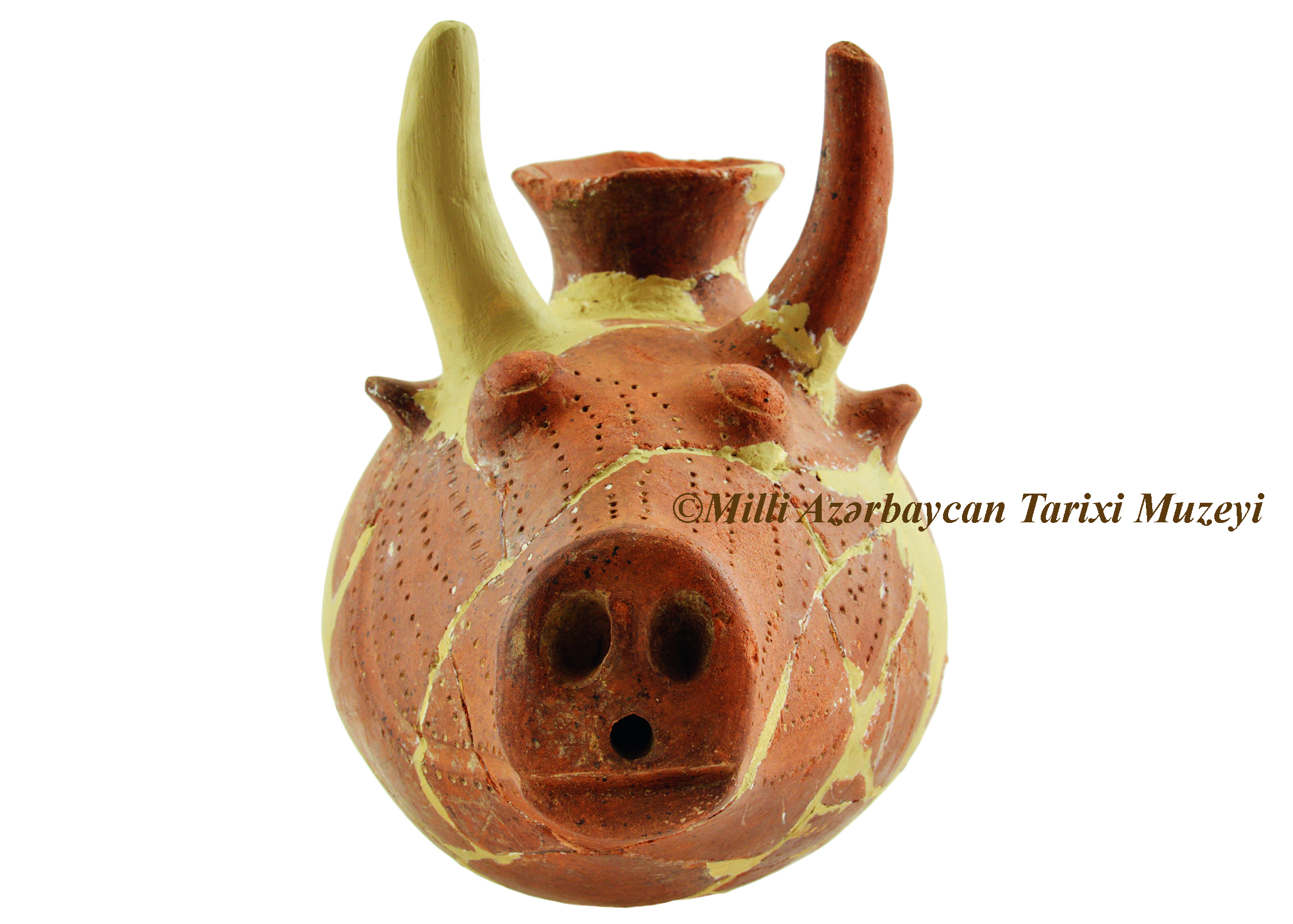
Archaeological works implemented on the territory of Azerbaijan Republic revealed many examples of the material heritage left from the country’s antique history. The vast majority of these artefacts produced for daily use, ritual and decorative purposes, are the different art pottery items (jugs, flower vases, plates, bowls, etc.). Produced with delicacy and high level of professionalism, these artefacts are characterized by the great variety of forms and colourful decorations. Speaking about decorations it deserves mentioning that the majority of zoomorphic and anthropomorphic pots discovered in both southern and northern parts of Azerbaijan are decorated with rich abstract ornaments. Discovered by the archaeologists in Gabala, Ismayilli, Shamakhi, Lerik, Mingechevir and other districts of the country, these earthenware artefacts help formulate a picture of the artistic and technological aspects of local pottery schools as well as aesthetical taste and the world outlook of the people of antique Azerbaijan. By decorating their masterpieces with abstract ornaments, by supplying them with specially designed handles, caps, legs and other practical elements, and by giving them a certain zoomorphic shape, craftsmen had managed to create outstanding artistic pottery examples with unique and very attractive appearance. One of such masterpiece artefacts has been discovered in 2012 by the archaeologist Jeyhun Eminli in Pibostapa necropolis (Lerik).
The artefact presents an ox or boar head shaped rhyton. Made from reddish coloured clay, the rhyton has an oval body with hole opened in the middle of its’ ox or boar shaped front face to allow issuance of a liquid. On the top of the item there are decorative projections made in the form of the eyes, ears and horns. Supplied with a neck, mouth and handles, the rhyton has a height of 17.5 cm, mouth diameter of 5.6 cm and base diameter of 3.5 cm. An entire body of the artefact is decorated with embossed dots.
Most probably manufactured for the ritual purposes, the rhyton gives quite certain picture of the world outlook of the area’s antique inhabitants.




